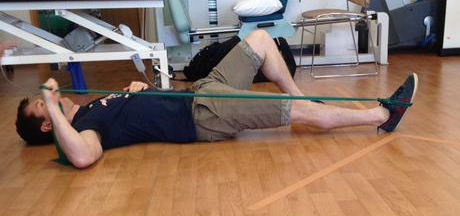You’d think that if you had been recommended shoulder surgery for subacromial ‘impingement’ pain that it would prove to be of superior benefit over and above all other treatment options.
Makes sense, right?
I mean, you’d think so wouldn’t you?
But does it?
Does surgery provide superior outcomes to specific shoulder physiotherapy for subacromial ‘impingement’ pain?
Well, let’s see what the evidence that is freely available suggests…
You’ll have to excuse my lack of Australian patient data but to illustrate my point I am using data from the NHS in the England.
In the 2001, there were 2523 subacromial decompressions performed in the UK for shoulder ‘impingement’ pain. By 2010, that number had grown to a whopping 21353 operations at an approximate cost of £64 million. Was there any evidence that surgery provided an enhanced outcome over physiotherapy?
The answer, wait for it…
NO!
Physiotherapy treatments for subacromial ‘impingement’ pain averaged 10 sessions and consistently demonstrated equal outcomes to surgery, with less risk to the patient, less sick leave and at a fraction of the cost.
In short, invest your hard earned dollars in physiotherapy first.
What about surgery versus physiotherapy for partial thickness rotator cuff tears?
A 2014 research study by Kukkonen et al looked at the one year clinical result of treating 180 subjects within 3 different randomised care pathways.
- Physiotherapy
- Physiotherapy and subacromial decompression (+/- ACJ and biceps tenotomy)
- Physiotherapy, subacromial decompression and rotator cuff repair

At one year follow up (n=167) the authors concluded that there was no clinical difference between the groups and each group had improved.
That means, that in this case 10 treatments of physiotherapy had the same benefit as subacromial decompression and rotator cuff repair.
These 2 examples, demonstrate clearly that shoulder physiotherapy should be considered as a primary treatment in subacromial ‘impingement’ pain and those with atraumatic partial thickness rotator cuff tears.
Surgery should be considered only for those that do not respond as desired to a dedicated shoulder physiotherapy program or those private patients that prefer it.
If you are seeking an alternative approach to solving your shoulder pain at a fraction of the potential cost then invest in a consultation with me.
Book Now!
References:
Beard, Prof D. J. et al (2018) Arthroscopic subacromial decompression for subacromial shoulder pain (CSAW): a multicentre, pragmatic, parallel group, placebo-controlled, three-group, randomised surgical trial. The Lancet, vol 391(10118): P329-338,
Kukkonen et al (2014) Treatment of non-traumatic rotator cuff tears: A Randomised Controlled Trial with one year clinical results. Journal of Bone and Joint, 96B (1), 75-81
Judge et al (2014) JBJS. 96-B: 70-4
Ketola et al (2009) JBJS. 91B (10): 1326-34
Ketola et al (2013) BJR. 2(7): 132-9
Haahr et al (2005) A Rheum Dis. 64(5):760-4
Haahr et al (2006) SJR. 35(3):224-8
Lewis, J (2011) SIS: A musculoskeletal condition or clinical illusion? PTR.^(5):388-98.
Lewis, J (20015) Bloodletting for pneumonia, prolonged bed rest for low back pain, is subacromial decompression another clinical illusion? BJSM. 49(5):280-1.
Lewis et al (2015) RC tendinopathy: Navigating the diagnosis-management conundrum. JOSPT. 45(11):923-937.







